Menus
- Generalization of ABS, connectivity, various and varied assistance: techno parade
- The automobile as a model
- "Big Brother is watching you"
- Make yourself known to be seen
- Horizon connected
- Driving assistance more than piloting
- Soon Euro V !
Generalization of ABS, connectivity, various and varied assistance: techno parade
So here we are with a nice bunch of specialists to hear the speech of Doctor Fevzi Yildirim director of the Bosch two-wheeler division. He praises us the merits of innovative technologies that will enrich our motorcycles tomorrow and the equipment manufacturer at the same time. It must be said that with production expected to exceed 160 million units by 2021, the two-wheeler market promises to be juicy. The generalization of ABS, connectivity, diverse and varied assistance, or the application of new environmental standards, are all tempting prospects for Bosch. But since we are talking numbers, let us not forget that every day 3,000 people are killed in the world by road accidents. 30% of them are riders of two-wheelers, who are 18 times more likely to die than motorists. While it is largely mercantile, the idea of making a difference is no less in the public interest. Whether it is a question of safety, ease of use, or respect for the environment, there are many areas for improvement.
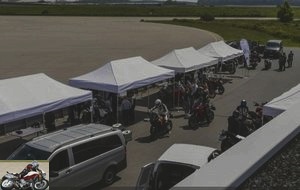
The automobile as a model
Most of the technologies that we were able to discover during our trip to the north-east of Stuttgart already exist or are in the process of being developed on 4 wheels. They will find a new application in the motorcycle. ABS, injection, Xenon lighting, then LED lighting are all examples of these technology transfers and the lag behind the automotive industry.
"Big Brother is watching you"
With all communication and tracking technologies, one has the legitimate feeling of being watched. Soon no way to take a step without knowing where we are, except to cut off our cell phone. But let’s recognize that comfort and security win out. The emergency call function ("e-call") allows you to locate you in the event of an accident, wherever you are in Europe, whether you are speaking or not. Using a sim card integrated into the motorcycle, the system calls a monitoring center capable of triggering help in the event of violent deceleration. A device that is all the more relevant as most accident victims do not know where they are…. But you can also call the center in case of breakdown, or even to find a hotel. This device is already present in the automobile, on subscription. But the best part is that it does not require any new equipment, apart from the telephone link. Indeed, the deceleration sensors are already present on the motorcycle in the MSC (Motorcycle Stability Control). A few additional programming lines are therefore sufficient to provide this function. So why go without it if it saves lives ?
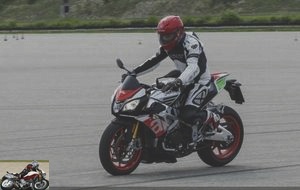
Make yourself known to be seen
Not seeing another road user is the cause of a third of accidents, especially on motorcycles. To avoid this massacre, we imagined a communication system between vehicles. The size of a pack of cigarettes, it transmits on a dedicated frequency, close to that of WiFi (5.9 GHz) and exchanges information 10 times per second. Its range varies from 200 m in town to 1 km in the countryside. As you approach a vehicle, a message is displayed on your screen indicating its speed, type and direction. The whole point of the system lies in its programming and its ability to sort information. For example in a flood of traffic, it should not saturate the driver with all the vehicles present, but just those which are potentially interesting. For example, a vehicle that arrives very quickly, another that travels in the opposite direction, or perpendicularly, etc. But as you approach a blind crossroads, when passing, this information is essential. A "vehicle to vehicle" communication system, different from blind spot alerts and other driving aids based on radar or on-board cameras. Of course, the efficiency of the system depends on the number of connected vehicles. We are talking about 50% of new cars in the USA in 2021 and 100% in 2023. What is to be feared, however, is the decrease in vigilance of drivers thus equipped who will rest on the machine. woe to the last "resisters" who will not be connected and risk paying the price…
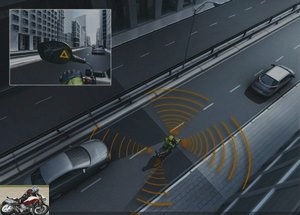
Horizon connected
Likewise, the vehicle can communicate with the infrastructures, a bit like on certain smartphone applications, to receive indications on the network. Traffic jams, potential dangers, roadworks and even indicative speed on a curve, for example, so much information that improves safety, except to have too much of course there too. In this regard, the ICC (Integrated Connectivity Cluster) is a system that allows you to control smartphone applications from the dashboard and the motorcycle’s controls. What is the point of adding a GPS and its support since you have one in your pocket? You might as well display it on your motorcycle’s dashboard using a Bluetooth interface. You will be able to share your screen, display motorcycle and smartphone data, but also GPS, or your lean angle, your speed on a curve, etc. No more needle counters, it’s a safe bet that the dashboards of the future will look more like tablets than dials, even if the display can still draw you a nice racing dashboard with a tachometer. round on white background!
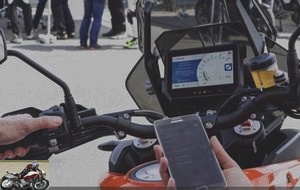
Driving assistance more than piloting
Hill start assist, or downhill restraint, may seem like a gimmick, but in fact, they come in handy on tall, heavy motorcycles. It will prevent falls when stationary…. with motorcycles that you can’t pick up on your own (haha, I know what I’m talking about). ABS "cornering" braking and traction control, during ESP in cars, are also there to save your day, but not necessarily to make you lap times on the track…. Because, unlike traditional ABS, the MSC (Motorcycle Stability Control) system does not intervene when locking the wheels, thus optimizing the level of grip available, but limiting the possible deceleration on the angle. Indeed, waiting for the wheels to lock before intervening would cause the pilot to fall. The MSC therefore behaves the same way rain, snow or wind. It is up to the manufacturer and driver to set the permissible deceleration, by choosing rain, normal or sport mode. Then, as soon as the brakes are applied, the forces at play straighten the bike and the less it leans the more it is possible to decelerate, ultimately achieving normal ABS operation, approaching vertical. A system specific to motorcycles, which is therefore not used in cars.
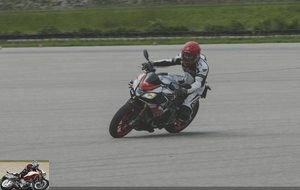
Soon Euro V !
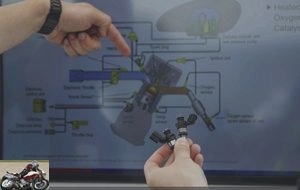
The changeover to Euro V will take place in 2 stages. The first in 2020, the second in 2024. While the first step results in a further reduction in emissions, the second adds a continuous check of the operation of the pollution control systems. Thus, a second Lambda probe placed after the catalyst will allow its performance to be checked. Fortunately, the computers, like the sensors, are getting smaller and smaller and more efficient, which should not add much to the weight of our motorcycles. New, longer injectors with a better controlled jet will also help to limit releases. Finally, Bosch is investing in electric mobility, with a fleet of scooters for hire, in Berlin first, then in Paris. Scooters equipped with in-house electronic management of course. Innovations and a reputation that will make Bosch a key player in our motorcycle world, as is already the case in the automotive industry.

Strong points
- Opening up the field of possibilities
- Improvement of active safety
- The motorcycle fits better in its environment
Weak points
- Complex technologies
- Driving under supervision
- Inflation
- Repair difficult, if not impossible for an individual
Related articles
-
Harley Davidson Ultra Classic and Ultra limited Rushmore test
Harley Davidson takes the plunge (and us with)! In the increasingly competitive world of luxury GTs, Harley Davidson is redesigning its copy and…
-
Corner socket under control Launched in 2013, the KTM 1190 Adventure benefits for 2014 from improved MSC stability control, which now takes into account…
-
A remarkable entry for KTM in the most profitable segment of the market Inline twin, 799 cc, 105 hp at 9000 rpm, 87 Nm at 8000 rpm, 169 kilos, from ¤…
-
Zero Motorcycles S test 13 kWh
0 to 100 km / h in less than 6 seconds Instant torque equivalent to that of the biggest sports cars Electric, motorcycle … two conflicting words for…
-
Lady Tri After a first static presentation in Neukirchen, during the Austrian Tri-Days, the English manufacturer is finally offering its 1200 Trophy to…
-
Piaggio MP3 500 ABS ASR Scooter
Ultimate evolution ? The Piaggio MP3 is a phenomenon in itself…. An idea first, then a hole in the legislation which made it possible to open up to…
-
Triumph Tiger Explorer 1200 test
A tiger with long teeth It’s no secret at Triumph, the Tiger Explorer is all about rocking the BMW R 1200 GS from its pedestal. A three-cylinder with…
-
The way of Reason Teutonne Without going back to the genesis of the 30-year-old RT (Reise-Tourer) lineage, this road model sees its modern lineage dating…
-
Roamer vs. Bobber: quite a movie ! The two-headed eagle ! Faced with the rise in range, displacement and power of competing models in the neo retro…
-
Always so surprising L-Twin Testastretta DVT, 1262 cm3, 159 hp, 129 Nm (13.1 mkg), 244 kg full made, 17 liter tank, € 20,490 and € 23,490 in S version…
Remember … very stable supermoto and a great engine at the time we made the return of the Bol d’Or so Bandol -Belgium 1300km in 8 hours !!! refuel Now impossible to do it if not jail etc … so now pure nostalgia.
Too bad it lacked development, me, it is the antique transmission which seemed to me unworthy of a motorcycle presented as "modern"..
A vulgar roller chain whose principle was designed by Leonardo Da Vinci around the year 1500 !!! Ridiculous and out of step with the front axle …